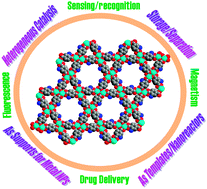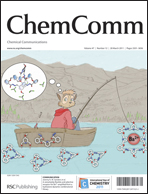Metal–organic frameworks (MOFs), also known as coordination polymers, have emerged as a new class of crystalline porous materials, which are constructed from metal ions or metal ion clusters and bridging organic linkers. MOFs have tunable pores and functionalities, and usually exhibit very high surface areas. The potential applications of porous MOFs cover a broad range of fields and most of their applications are related to pore sizes, shapes and structures/environments. In this feature article, we provide an overview of the recent developments of porous MOFs as platforms in the functional applications of sorption and separation, heterogeneous catalysis, as supports/host matrices for metal nanoparticles, and as templates/nanoreactors for new material preparation.
You have access to this article
 Please wait while we load your content...
Something went wrong. Try again?
Please wait while we load your content...
Something went wrong. Try again?


 Please wait while we load your content...
Please wait while we load your content...